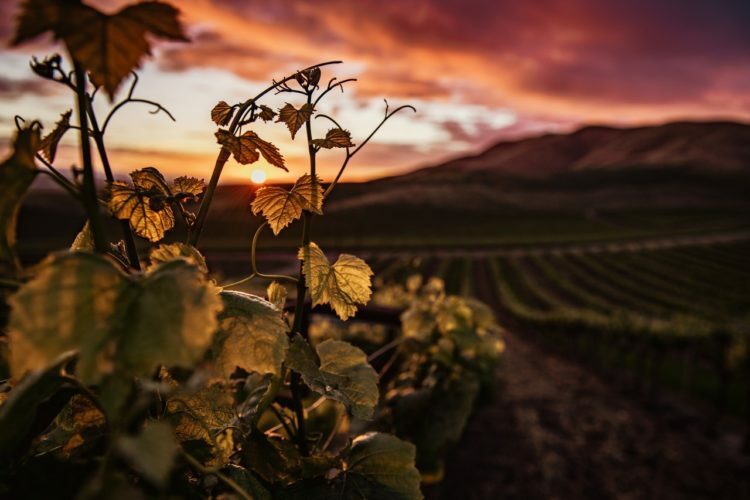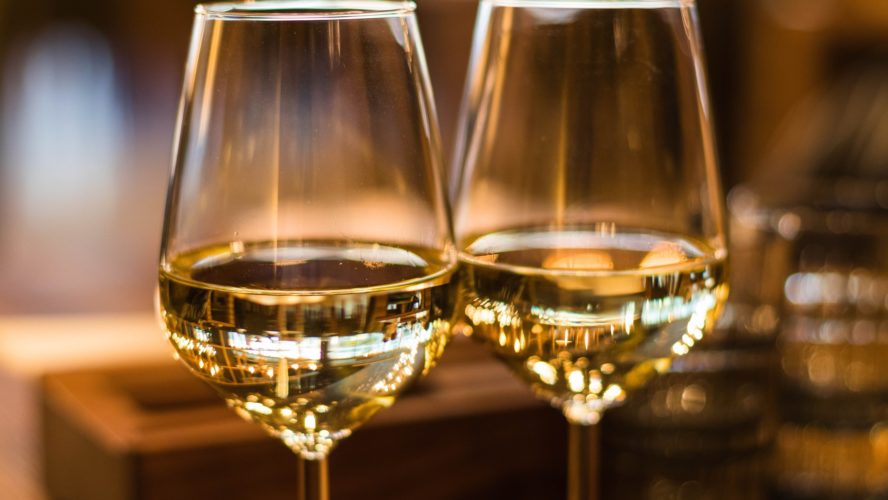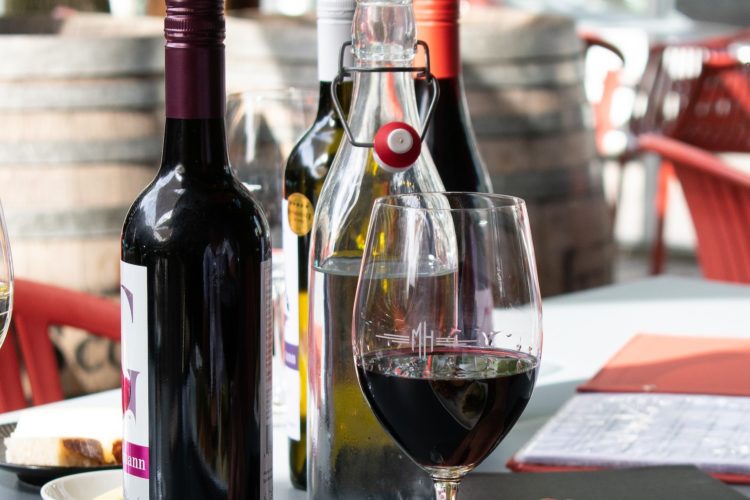By Bryan Ergle
Wine. The very name conjures up specific images for people; the word is equated with wealth and luxury, status and sophistication. It has been held up throughout history as one of those ephemeral concepts going all the way back to the Greek gods, and even before. To this day, no drink speaks to higher refinement in society.
The downside is that, for most people, this concept that is ‘wine’ is intimidating; it is a world of unique terminology, its own language… the ‘sophisticates’ speak to palettes and notes and flavors which are alien to a newcomer. Speaking from experience, I know that this alone can be enough to frighten away a potential aficionado. Despite this, the language spoken by wine enthusiasts worldwide does not have to be a barrier to entry. I realize that it is a club of sorts, and that’s the perception. To quote the late George Carlin, “It’s a big club and you ain’t in it!” But you can be!
The simple fact of the matter is no matter is that no matter how highfalutin a wine enthusiast may be, or how snobbish they may come across, they all started from zero. Nobody is born with innate wine knowledge. The thing that may be intimidating, as with many things, is the concept of getting into it without having to be an expert, in what seems like a world of experts, and having to spend large amounts of money. These are the first steps that we will endeavor to help you to take.
Right now, the words ‘red’ and ‘white’ indicate colors, and cabernet, sauvignon blanc, and chardonnay are just words you have read on a label, and concepts like ‘fruity’, ‘acidic’, ‘nutty’ and ‘earthy’ are meaningless words regarding wine. The first steps are that you can understand wine without having a huge base of knowledge. Don’t ever let anyone ever tell you otherwise! No matter to whom you are speaking, even the best sommeliers in the world will speak to the fact that the wine experience is largely subjective. As such, the first thing is to understand enough that you can taste wines and, importantly, appreciate what goes into them.
Let’s start with some basics. Wine is broken down into certain categories; you have red wines – these are obviously red in color, the most common being cabernet sauvignon, merlot, pinot noir and zinfandel (not white zinfandel). White wines, which are not actually white but are typically light yellow or pale in color by contrast, the most common of which are going to be your chardonnays, sauvignon blancs and pinot grigios. Roses, which are a middle ground between a white and red and are a pinkish color. There are sparkling wines, such as champagnes and proseccos. Finally, there are fortified and dessert wines. While there are a few additions to this if you are getting into the more esoteric, these will encompass most of the wines you will experience and all that you will need to embrace to first learn about and enjoy wine.
Before we dig into the individual types of wine – the individual grapes (or varietals), let’s talk a little bit about how wines are made, because the complexities of that can enhance the appreciation for what goes into the bottle that you’re enjoying. To quote the movie Bottle Shock, “It all begins with the soil, the vine, the grape.” The vineyards around the world that produce wine, be they in France, the United States, Australia, Chile, South Africa, Argentina or elsewhere, each exist in a unique sort of climate which is called a microclimate. Different countries have different terms for these; in the U.S. they are called American viticultural areas, while in France they are called appellations.
These microclimates are a unique combination of temperature, humidity and other factors that create the ideal conditions for wine grapes to grow and mature to a point where they can be harvested in amounts that can then be pressed into wine. Different harvesting methods are used in different vineyards around the world, or sometimes even in different vineyards next door to each other! But often, grapes are still cultivated by hand, monitored by watchful human eyes and harvested, again, by hand. When you consider that about four hundred grapes on average go into a single bottle of wine, you begin to understand the level of human effort that goes in just to the growth and harvesting of wine grapes. But that doesn’t yet speak to the complexities beyond that.
While the grape, and the soil (terroir) in which it is grown, is the true source, the purest source of a wine’s character, it can never be realized without the artistic touch of a knowledgeable vintner. A winemaker who takes those grapes and extracts the juices, ages them in different types of barrels or stainless steel vats or cement vessels, moving them between those containers, making changes along the way, combining different juices from different grapes, changing the conditions of the aging, determining the length of the aging and far, far more to create a finished product that is as much art as it is science and agriculture.
Understanding now some of the basics that go into wine, let us take a look at a few, just a handful of the most common wine grapes (these are called varietals) that you are likely to encounter! Note, I’m not going to try my hand, at the moment, in explaining pronunciation – a quick google or YouTube search will be better for that than phonetic typing ever would be!
First would be cabernet sauvignon. Often considered the gold standard amongst red wines, this is a “heavier”, or darker and often stronger flavored, wine that has what wine aficionados refer to as a full body. Body, in the context of wine, is basically how rich a wine tastes and involves not only the varietal but also things such as the alcohol content. Cabernet sauvignon will typically be aged longer than many white wines and will also have a higher alcoholic content as a result.
Of note, contrary to popular myth, red wines and white wines are not determined by the color of the grape juice, as the juice that comes out of the different varietals is almost universally lighter in color. Red wines are made red by aging those varietals on the lees, or in other words, aging the juice in the same container with the skins of the grapes. These skins contain tannins, which are a type of acid which adds a bitterness and a dry complexity to the wines. Red wines are not the only foods with tannins; for other examples, you can look to whole nuts with skins, tea leaves, cinnamon or dark chocolate.
Pinot noir is a lighter color red wine (note that this does not mean pink, like a rose, it is simply not as dark as many other red wines) and does not have as much body. There is a great diversity of pinot noirs from around the world, perhaps more so than there is amongst cabernet sauvignons in diversity.
 Chardonnay is a fuller bodied white wine which, despite the name, is often characterized by a mild golden color and frequently has distinct vanilla and woody notes resulting from being aged in oak wine barrels. There are un-oaked chardonnays, typically aged in stainless steel, which have a purer chardonnay flavor which is still full bodied but without the added character of the woodsy vanilla notes. These are sometimes aged, or sometimes served young but will typically be lower in alcohol content than comparable red wines.
Chardonnay is a fuller bodied white wine which, despite the name, is often characterized by a mild golden color and frequently has distinct vanilla and woody notes resulting from being aged in oak wine barrels. There are un-oaked chardonnays, typically aged in stainless steel, which have a purer chardonnay flavor which is still full bodied but without the added character of the woodsy vanilla notes. These are sometimes aged, or sometimes served young but will typically be lower in alcohol content than comparable red wines.
Pinot grigio is amongst the lightest of the white wines with an extremely pale, almost clear coloration and a very light body and consequently more subtle flavor profile. The specific flavors will depend on the soil in which the grapes were grown, which is called terroir.
Sauvignon blanc is a more medium-bodied white wine with an extremely diverse character depending on the terroir in which it is grown and the area of the world from which it is sourced. For example, sauvignon blancs from the United States will often have a more tropical fruity character which might come across as being described as mineralistic, with a slightly acidic fruitiness befitting a wine; from New Zealand by comparison, they are more fragrantly fruity and bitter floral. Note, bitter does not mean unpleasant, I simply want it understood that wines with the exception of dessert wines are not meant to be sweet.
A note on sparkling wine and champagne: one of the things that can get you kicked out of the “wine club,” if there is such a thing, is mistakenly referring to all sparkling wine as champagne. There is nothing further from the truth! Champagne is a term, which is legally protected, which refers to sparkling wine produced by specific vineyards – known as houses – in the Champagne region of France. Knowing this, both champagnes and sparkling wines can come in white or rose varieties, most often found as whites because roses are much more complex and difficult to make and consequently the prices are (or should be) higher as a result. It is always a red flag when a rose champagne is cheap!
While sparkling wines comprise different grapes in different regions around the world, notably moscato for dessert wines, or prosecco from Italy, the only grapes allowed in champagne are chardonnay, pinot noir, and a grape you have not yet read about here, pinot meunier (another red grape). Consequently, a large portion of the sparkling wines you will find are comprised of these three grapes, and we will get into the specifics of the champagnes and other sparkling wines later.
An advisable start for anybody is to understand enough of the basics that you don’t feel uncomfortable at a restaurant or store placing an order, but that, at the same time, does not mean to be afraid of doing so. Be adventurous, start by trying some of these things and see what you like and what you don’t like. Understand that, at first, wine is going to taste very alien if you are not familiar with it. Admittedly, even I, a sommelier, when I first started found wine unpleasant to drink because my palette had not yet been “built up” to drink. Don’t worry if someone is talking about all of the things that they taste and smell in a particular wine, and all that you can taste is ‘grapes’. We’ve all started there!
But don’t be afraid to take a moment and keep the wine in your mouth, swirl it around, see what little nuances you might find, and understand that what someone else tastes might be completely different from what you do. You may find that the things you notice evoke certain tastes you are familiar with, or more often scents you are familiar with. This is normal, make note of them and make note of the wines that you enjoy, the wines that you do not. And don’t be afraid to press forward.
However, I will leave you with a few parting thoughts before we get into the next article in the wine series, which are these: first, you will rarely find a bottle of wine of decent quality for less than ten U.S. dollars (for a 750 ml bottle); this is simply a function of the amount of work that has to go into producing a decent wine. Second, don’t fall prey just to pretty labels; some good wines have plain labels and some awful wines have very sparkly ones. Third, if you are just starting out, avoid the temptation to over-invest until you have built up your palette until you have built up your palette. There is no need to try a $200 or $500 or, God forbid, a $1,000 bottle of wine. The quality unfortunately would almost certainly be wasted on you until your palette is built up enough to appreciate it. Next, don’t fall prey to marketing; I can’t recall having ever seen any of the better wines I’ve enjoyed being marketed… ever, anywhere. And finally, no matter how good the marketing that box is never a good vintage! If it comes in something with corners, just say no!




One Reply to “Join the Club: Introduction to Wine”
נערות ליווי
Itís nearly impossible to find well-informed people for this topic, but you seem like you know what youíre talking about! Thanks